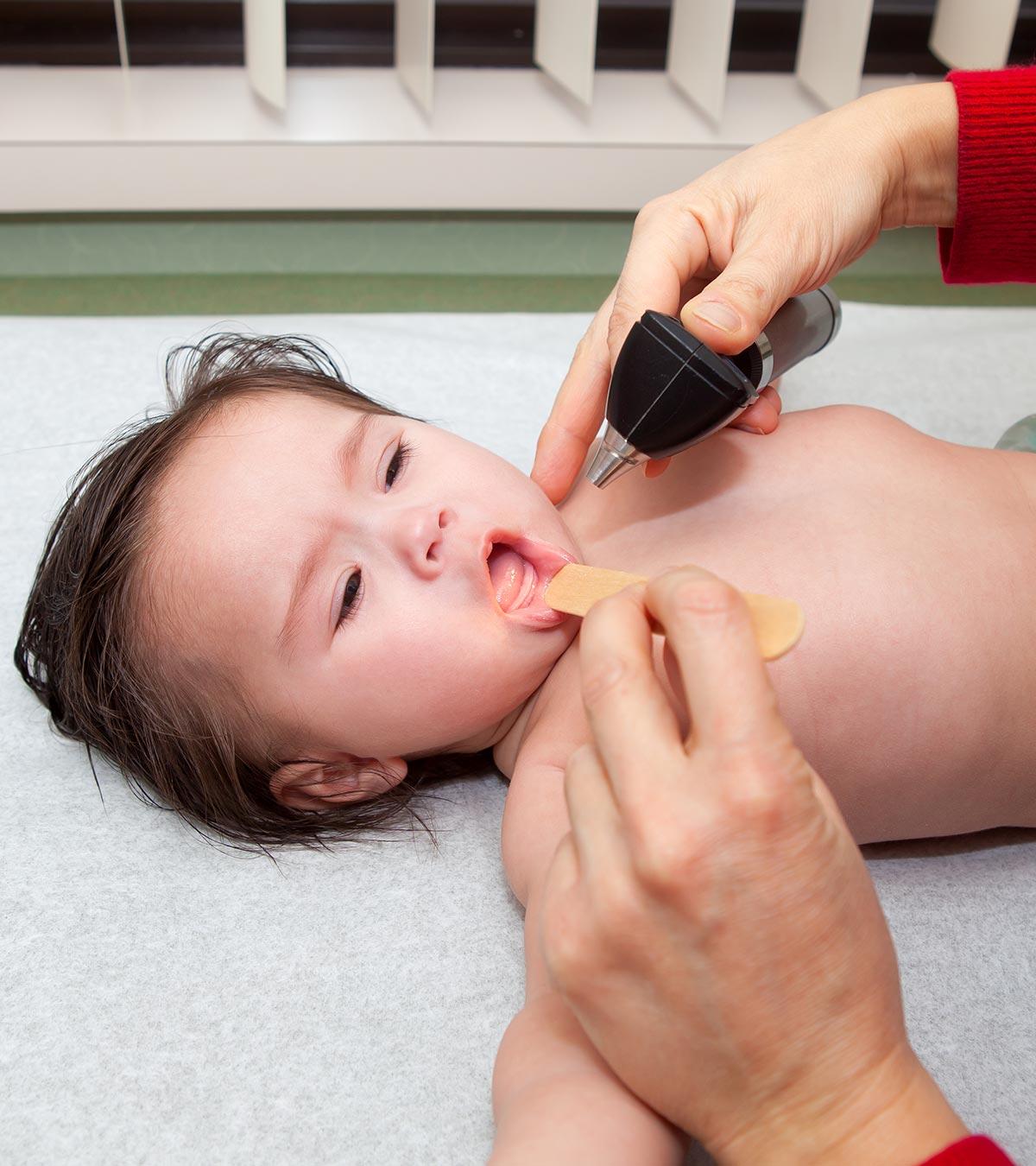
Image: ShutterStock
The statistics and facts about teen pregnancy have always been alarming, with most pregnancies reported in the US (1). Most cases are accidents or mistakes, leading to health concerns such as delay in child development and abortions, which often cause strain on the healthcare sector.
Thankfully, teen pregnancies have shown a decline since 1991, and the overall number of pregnant teens opting for abortion has reduced by half. In 2020, females aged 15-19 experienced a notable decline in the birth rate. According to data released by the Centers for Disease Control and Prevention (CDC), the birth rate for this age group reached 15.4 births per 1,000, representing an 8% drop from the previous year (16.7) and establishing a new record low. But only some states in the United States have shown a drop. The decline is also limited to certain communities. For instance, African-Americans constituted a significant chunk of teen pregnancy statistics. However, the rates have shown a decline among them (2). Despite the drop in the comparative rates, teenage pregnancy rates remain higher among African-Americans and Hispanic populations. Read on to know more such facts and statistics about teenage pregnancy.
Important Statistics About Teen Pregnancy
- 78 out of 100 White teens and 70 out of 100 African-American teens stated that improper communication between them and their parents is a huge cause of teenage pregnancy.
Image: Shutterstock
- Out of all the teen pregnancies, sadly, only 57 out of 100 actually have a successful birth and delivery whereas 14 out of 100 experience a miscarriage.
- Teen mothers that give birth share 11% of total births in the whole country.
- As per the Family First Aid, the rate of teenage pregnancy costs the U.S a whopping 7 million dollars annually!
- 2 out of those 10 teens don’t receive proper medical assistance and prenatal care.
- Around 82% of teen pregnancies are unplanned (3).
- Parenthood is the main reason as to why teen girls drop out of school. Around 51% of teen mothers are unable to attain a high school diploma (3).
- A teenager who indulges in unprotected sex, faces a high chance (around 90 %) of getting pregnant within a year.
- Teens with older partners than them are twice as likely to have unwanted sex (4) .
- 5 out of every 10 girls say that their first interaction was unwished or involuntary.
- Most teens who use family planning birth control methods like pills or condoms, are inconsistent and turn to such solutions sporadically.
- Around half of American teens are active sexually. Many teens have sex at young ages, which increases the risk of STDs and teen pregnancy due to risky sexual behavior.
- Amongst industrially developed nations, the USA faces the highest rates of teen pregnancy and teen abortions (1) .
Image: IStock
- Girls, who give birth before the age of 20, are more prone to health risks and complications such as preterm deliveries, lower-weight babies, and other adverse neonatal outcomes (5).
Maddie Lambert, an adolescent mom who got pregnant at the age of 13, shares her experience. She says, “My doctor monitored my pregnancy closely because I was very young. When you’re young and pregnant, there are higher health risks for both the baby and you. During my pregnancy, I had both hyperthyroidism and hypothyroidism, and my whole pregnancy bounced up and down like crazy, making it a very challenging experience (i).”
- Over 4 of 10 teenage girls get pregnant once before the age of 20, and 8 of these 10 pregnancies are accidents/unplanned.
- Among 15 to 17 year olds, the pregnancy rate is 38.7 per 1000 girls.
- Half of the above-mentioned pregnant teens give birth, while approximately 45 out of 100 women have abortions.
- 4 out of 10 women in the US become pregnant before they even reach 20 years of age.
- About 750,000 American teens get pregnant each year, mostly before turning 20. Often, a teen mother gets pregnant with her second child within a few years of having the first (6).
- Teen pregnancy facts has listed the U.S as the nation with the highest recorded number of teen pregnancies every year. Although in 2011, the birth rate fell to a record low for the first time in 70 years (6).
 Quick fact
Quick factFacts About Teen Pregnancy
Gynecologist & obstetrician Dr. Nandita Palshetkar says, “Young people often have little knowledge and understanding of the consequences of sexual activity, which can lead to unplanned pregnancies. Moreover, a lack of communication between parents and teenagers on these topics leads them to engage in unsafe behaviors that can result in unintended pregnancies. In addition, peer pressure can play a role in teenage pregnancy, with some teens feeling social or cultural pressure to engage in sexual activity before they are ready.”
Before you go into the details about the risks involved with teen pregnancy, here are a few facts about the same that you should also know about:
- Most high school students have had a sexual encounter at least once, and many have also been involved in sexual intercourse during their high school years.
- Almost eight out of ten pregnancies that occur in the teenage years are unplanned. Most of these also happen before the teens are ready to understand the implication and importance of becoming parents.
Image: Shutterstock
- About 18 percent of teen girls who are around 15 years of age will give birth by the time they turn 20 years old.
- In teen girls who are from an African ethnicity, the number is higher and accounts for about one in four cases.
- In teen girls who are from a Hispanic ethnicity, the number is higher than the teen girls from a black ethnicity and accounts for about one in three cases.
- In teen girls who are from a Caucasian ethnicity, the number is the same as that of teen girls from a black ethnicity and accounts for about one in four cases.
The graph here illustrates the teen birth rate based on the origin and race of adolescent women aged 15 to 19 in the years 2018 and 2019. The rates either decreased or remained static but did not show any increase year on year.
Birth rates among teenagers in the US
Source: Martin JA, Hamilton BE, Osterman MJK, Driscoll AK. Births: final data for 2019. Natl Vital Stat Rep. 2021;70(2):1–50. Centers for Disease Control and Prevention- One of the easiest and most effective ways to prevent any pregnancy during the teenage years is to stay away from having any sexual intercourse, with or without protection.
- Teen pregnancy is one of the main reasons why teens drop out of school. More than half of all teen moms don’t graduate high school, usually due to the societal stigma and economic impact. The lucky ones get help and find their support systems among friends and family, as parents of teen moms find it difficult to support the mom and the baby. Alternatively, some schools offer daycare programs, which help teen moms finish their graduation. Unfortunately though, most schools don’t have such systems.
Image: Shutterstock
- According to teenage pregnancy statistics, 1 out of every 3 girls in the U.S. becomes pregnant before she turns 20. More than 700,000 teens get pregnant every year. Often, a young mother gets pregnant with her second child within a few years of having the first.
- Teen pregnancy is one of the main reasons why teens drop out of school. More than half of all teen moms don’t graduate high school. The lucky ones get help and support from friends and family, as parents of teen moms find it difficult to support the mom and the baby. Alternatively, some schools offer daycare programs, which help teen moms finish their graduation. Unfortunately though, most schools don’t have such systems or provide necessary adolescent mental health support.
- College isn’t an option for most teen moms. If college is an option, it’s an option for later. Less than 2% of teen moms graduate college by the time they turn 30. Work, school and taking care of a baby is a daunting task and is too much for anyone. Many teen moms work minimum wage jobs to make ends meet.
 Point to consider
Point to consider- Many people may not know this, but race does have an impact on teen pregnancy. The 2008 teen pregnancy rate among Hispanic teens and African-American teens between the age of 15 and 19 was higher than the rate among “white” teenage girls. The reasons are debatable, as many think the poverty levels and education disruption are common causes.
 Expert says
Expert saysSingle%20Teenage%20Moms
%0D%0A%5Bcaption%20id=” attachment_886334 align=”alignnone” width=”720″ class=”size-full wp-image-886334″ src=”https://www.momjunction.com/wp-content/uploads/2022/10/Facts-about-teen-pregnancy.jpg” alt=”Facts about teen pregnancy” height=”480″> Image: Shutterstock[/caption]
Statistics show that 8 out of 10 teen dads do not marry the mother of their child and often, the relationship doesn’t last until the baby’s first birthday (6). 20% of these young fathers get into a new relationship within 2 years of ending the previous relationship, and become a father again. Over 80% of teen mothers eventually become single mothers, which makes parenting even harder. Proper sexual education and counseling can eliminate social stigma and help reduce teenage pregnancy by providing accurate information.
Frequently Asked Questions
1. How to prevent teenage pregnancy?
Here are some helpful ways of preventing teen pregnancies (7).
- Advise abstinence from sexual activity.
- Acknowledge LARC (Long-Acting Reversible Contraception) as a reliable and secure form of contraception options for adolescents.
- Present various birth control options for adolescents, including LARC, and examine the benefits and drawbacks of each.
- Acquire training in LARC insertion and removal, keep a supply of LARC on hand, and investigate funding options to offset expenses.
- Visit a healthcare provider with the teen to learn about various types of birth control.
- Formulate clinical guidance for the safe and effective use of birth control.
2. What is the most common age for teenage pregnancy?
Common teenage pregnancies belong to the age group of 15 to 19 years of age (5).
3. What country has the highest teenage pregnancy rate?
According to reports of the UNFPA (United Nations Population Fund), Angola has the highest teen pregnancy rates in the world (8).
Despite the decline in the incidences of teen pregnancies, the statistical facts about teen pregnancy show that there are still a high number of cases in the US, with an occurrence rate of 38.7 per 1000 girls. While many of these pregnancies result in abortions or miscarriages, up to 80% of the teens become single moms. Knowing these facts and figures can assist you in educating your children about the consequences of teen pregnancy.
Infographic: Statistics And Facts About Teen Pregnancy
Teen pregnancy is a complex issue that can have significant consequences for teenagers, their family, and their community. However, it is essential to note that not all teen pregnancies result in adverse outcomes and some individuals go on to lead fulfilling lives. The infographic below lists some key facts and statistics about teen pregnancy to help you better understand its trends and effects. Illustration: Momjunction Design Team
Key Pointers
- Although the rates of teenage pregnancies have declined over the years, discrepancies still exist among specific communities.
- Out of the total number of deliveries in the country, 11% constitute teen mothers.
- Most teen pregnancies entail a high risk of preterm birth and low birth weight.
- Preventing sexual relations during the teenage years can help in reducing the chances of teen pregnancy.
Some thing wrong with illustration image shortcode. please verify shortcode syntax
Teen pregnancy is a serious issue that affects many young people and their families. Learn the facts about teen pregnancy and educate yourself on how to prevent it.
Personal Experience: Source
MomJunction articles include first-hand experiences to provide you with better insights through real-life narratives. Here are the sources of personal accounts referenced in this article.
i. Pregnant at 13: my story *updated + details I’ve never told before*.https://youtu.be/1tNdz5Id4M8
References
- Melissa S Kearney and Phillip B Levine; (2012); Why is the teen birth rate in the United States so high and why does it matter?
https://pubmed.ncbi.nlm.nih.gov/22792555/ - About Teen Pregnancy.
https://www.cdc.gov/reproductive-health/teen-pregnancy/?CDC_AAref_Val=https://www.cdc.gov/teenpregnancy/about/index.htm - Unintended Pregnancy Among Young People in the United States.
https://www.advocatesforyouth.org/resources/health-information/unintended-pregnancy-among-young-people-in-the-united-states/#:~:text=But%20750%2C000%20teens%20become%20pregnant - Christine E. Kaestle et al.; (2002); Teenage Pregnancy: Consequences And Risk Reduction.
https://www.guttmacher.org/journals/psrh/2002/11/sexual-intercourse-and-age-difference-between-adolescent-females-and-their - Adolescent pregnancy.
https://www.who.int/news-room/fact-sheets/detail/adolescent-pregnancy - 11 FACTS ABOUT TEEN PREGNANCY.
https://www.dosomething.org/us/facts/11-facts-about-teen-pregnancy - Preventing Teen Pregnancy
https://www.cdc.gov/vitalsigns/young-teen-pregnancy/index.html - Tackling one of the world’s highest teenage pregnancy rates to give girls a better future.
https://esaro.unfpa.org/en/news/tackling-one-worlds-highest-teenage-pregnancy-rates-give-girls-better-future
Read full bio of Dr. Irene (Eirini) Orfanoudaki
- Dr. Nandita Palshetkar is a gynecologist and IVF specialist with over 30+ years of experience. She is the scientific director at Blooms IVF clinic in Mumbai, India.
 Dr. Nandita Palshetkar is a gynecologist and IVF specialist with over 30+ years of experience. She is the scientific director at Blooms IVF clinic in Mumbai, India.
Dr. Nandita Palshetkar is a gynecologist and IVF specialist with over 30+ years of experience. She is the scientific director at Blooms IVF clinic in Mumbai, India. - Dr. Nisarg Patel is a gynecologist, obstetrician, and laparoscopic surgeon from Ahmedabad, India, with over 13 years of experience in the field. He did his post graduation in Obstetrics and Gynecology from Pravara Institute of Medical Sciences, Ahmednagar, and holds a fellowship of Reproductive Medicine.
 Dr. Nisarg Patel is a gynecologist, obstetrician, and laparoscopic surgeon from Ahmedabad, India, with over 13 years of experience in the field. He did his post graduation in Obstetrics and Gynecology from Pravara Institute of Medical Sciences, Ahmednagar, and holds a fellowship of Reproductive Medicine.
Dr. Nisarg Patel is a gynecologist, obstetrician, and laparoscopic surgeon from Ahmedabad, India, with over 13 years of experience in the field. He did his post graduation in Obstetrics and Gynecology from Pravara Institute of Medical Sciences, Ahmednagar, and holds a fellowship of Reproductive Medicine.
Read full bio of Swati Patwal
Read full bio of Ghazia Shah

























